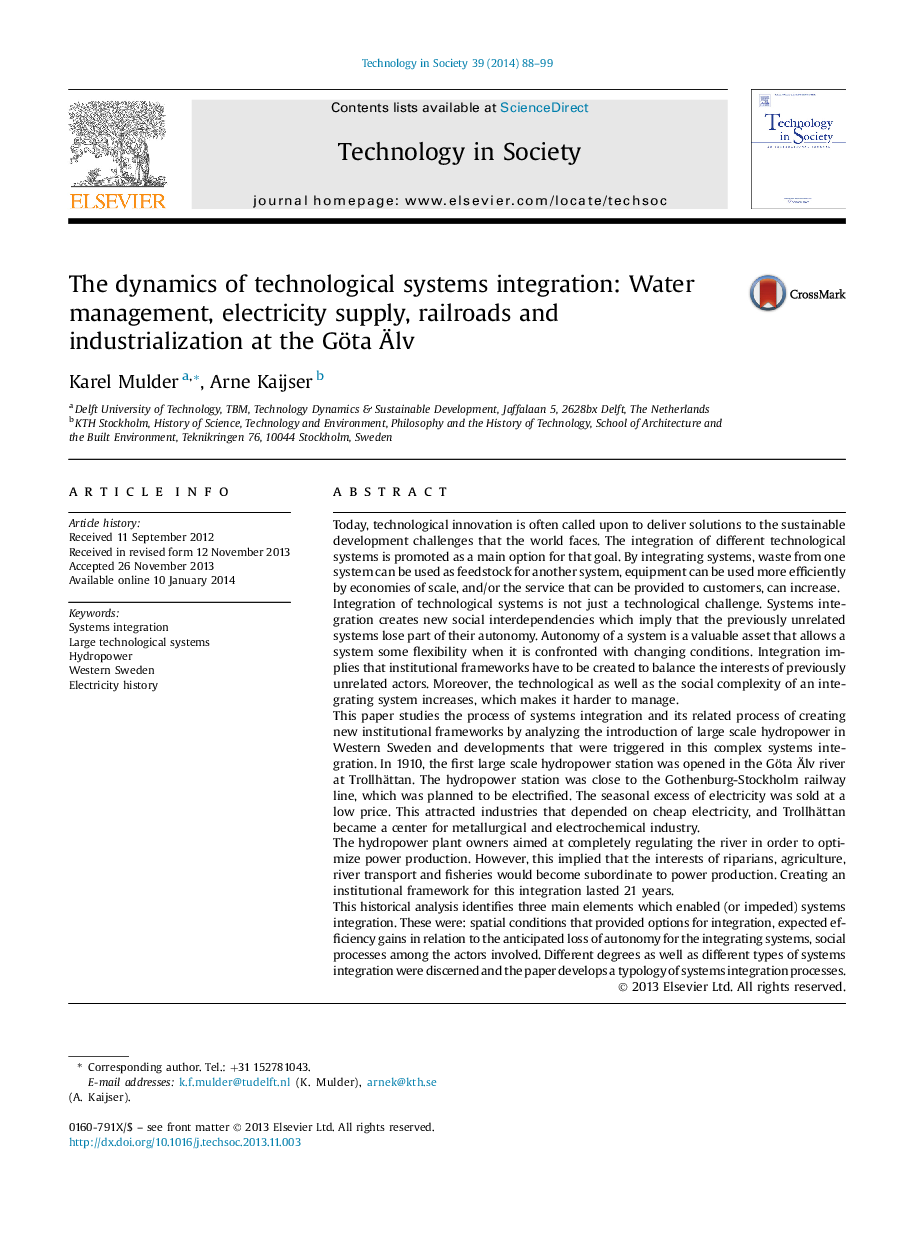| کد مقاله | کد نشریه | سال انتشار | مقاله انگلیسی | نسخه تمام متن |
|---|---|---|---|---|
| 375182 | 622672 | 2014 | 12 صفحه PDF | دانلود رایگان |

• Systems integration, i.e. creating lasting relations between technical systems, has not been sufficiently analyzed as innovation.
• Integration of technological systems creates interdependencies which imply that the participating systems lose autonomy.
• Integration of different types of systems does not necessarily contribute to a ‘lock in’ of the participating systems.
• Reaping benefits of systems integration while maintaining responsiveness is an important subject for further study.
Today, technological innovation is often called upon to deliver solutions to the sustainable development challenges that the world faces. The integration of different technological systems is promoted as a main option for that goal. By integrating systems, waste from one system can be used as feedstock for another system, equipment can be used more efficiently by economies of scale, and/or the service that can be provided to customers, can increase.Integration of technological systems is not just a technological challenge. Systems integration creates new social interdependencies which imply that the previously unrelated systems lose part of their autonomy. Autonomy of a system is a valuable asset that allows a system some flexibility when it is confronted with changing conditions. Integration implies that institutional frameworks have to be created to balance the interests of previously unrelated actors. Moreover, the technological as well as the social complexity of an integrating system increases, which makes it harder to manage.This paper studies the process of systems integration and its related process of creating new institutional frameworks by analyzing the introduction of large scale hydropower in Western Sweden and developments that were triggered in this complex systems integration. In 1910, the first large scale hydropower station was opened in the Göta Älv river at Trollhättan. The hydropower station was close to the Gothenburg-Stockholm railway line, which was planned to be electrified. The seasonal excess of electricity was sold at a low price. This attracted industries that depended on cheap electricity, and Trollhättan became a center for metallurgical and electrochemical industry.The hydropower plant owners aimed at completely regulating the river in order to optimize power production. However, this implied that the interests of riparians, agriculture, river transport and fisheries would become subordinate to power production. Creating an institutional framework for this integration lasted 21 years.This historical analysis identifies three main elements which enabled (or impeded) systems integration. These were: spatial conditions that provided options for integration, expected efficiency gains in relation to the anticipated loss of autonomy for the integrating systems, social processes among the actors involved. Different degrees as well as different types of systems integration were discerned and the paper develops a typology of systems integration processes.
Journal: Technology in Society - Volume 39, November 2014, Pages 88–99